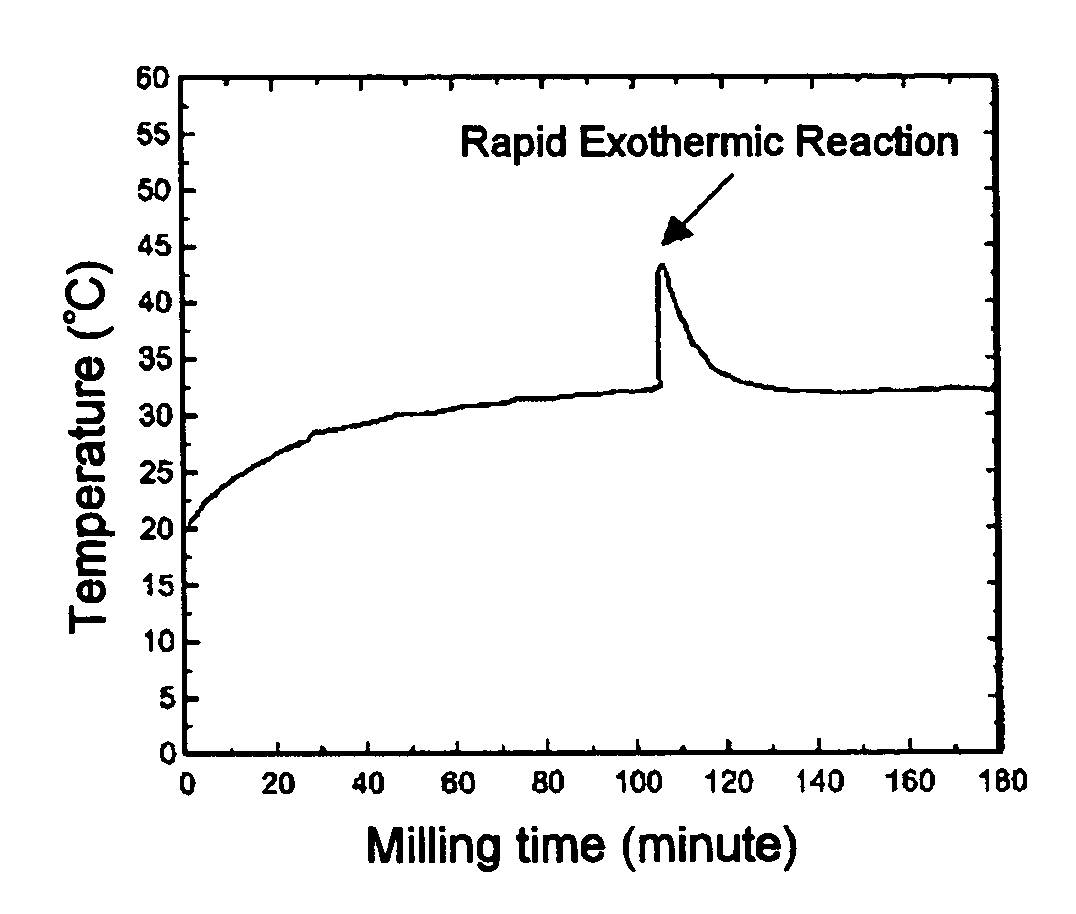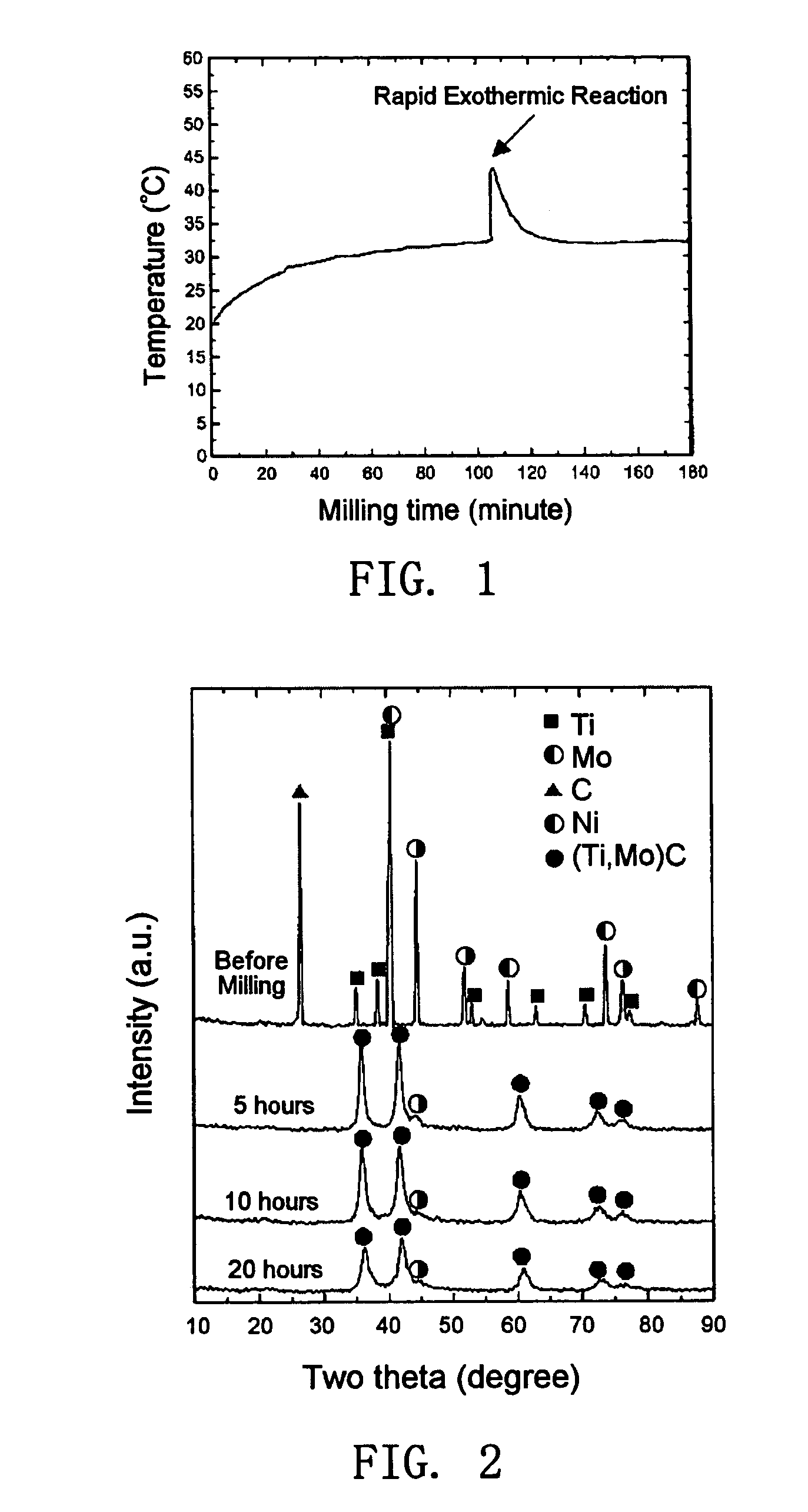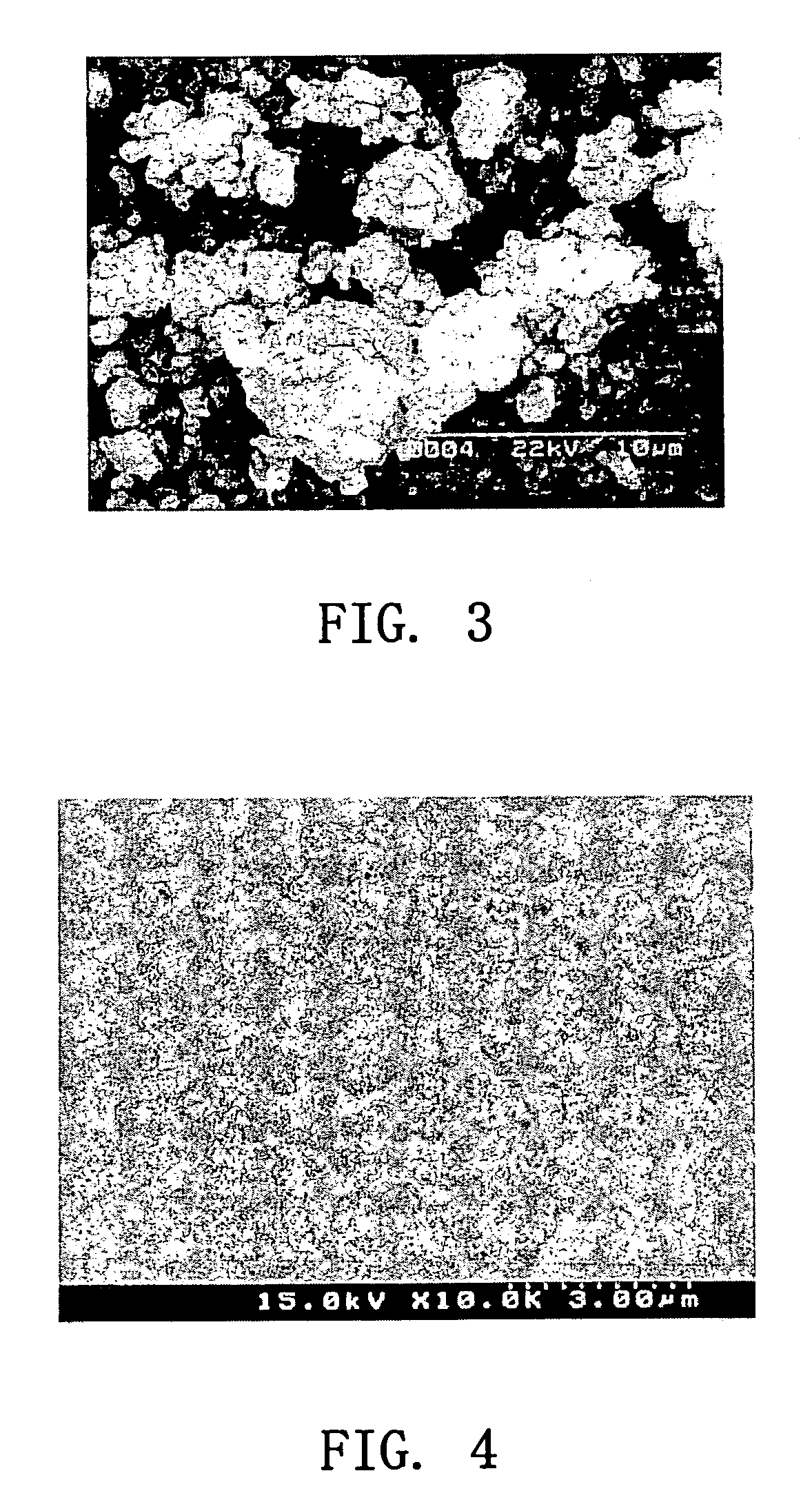Method of fabricating ultra-fine cermet alloys with homogeneous solid grain structure
a technology of solid solution and cermet alloy, which is applied in the direction of metal-working apparatus, transportation and packaging, nanotechnology, etc., can solve the problems of deteriorating the physical property of the sintering body, no fabrication method of tic-base cermet alloy with the core-rim structure was able to overcome the limit of kinectic determination, gas phase or solid-state reaction method is inappropriate for massive manufacturing of carbide nano-powder, etc., to achieve high- hard hard-
- Summary
- Abstract
- Description
- Claims
- Application Information
AI Technical Summary
Benefits of technology
Problems solved by technology
Method used
Image
Examples
embodiment 1
[Preferred Embodiment 1]
[0045]Ti powder with a purity value above 99.7% and diameter less than 45 μm, Mo powder with a purity value above 99.7% and diameter less than 5 μm, C powder with a purity value above 99% and diameter less than 5 μm, Ni powder with a purity value above 99.7% and diameter less than 6 μm are mixed to form powder mixture of TiC 60 wt %, Mo2C 20 wt % and Ni 20 wt %.
[0046]The powder mixture is put into a tool steel milling jar together with tool steel balls with diameter of 9.5 mm where the weight ratio between the powder mixture and balls is 10:1. Next, high energy ball milling is carried out for 20 hours after the milling jar is charged with argon gas.
[0047]The surface temperature of the milling jar is measured using a non-contact type infrared thermometer.
[0048]As shown in FIG. 1, a sharp temperature rise on the surface of the milling jar is found in 100 minutes during milling.
[0049]The milled composite powders dried, granulated and compacted under a pressure o...
embodiment 2
[Preferred Embodiment 2]
[0061]Ti powder with a purity value above 99.7% and aiameter less than 45 μm, W powder with a purity value above 99% and diameter less than 1 μm, C powder with a purity value above 99% and diameter less than 5 μm, Ni powder with a purity value above 99.8% and diameter less than 6 μm, Co powder with diameter less than 10 μm are mixed to form a powder mixture of TiC 65 wt %, WC 20 wt %, Ni 8 wt % and Co 7 wt %.
[0062]The powder mixture is put into a tool steel milling jar together with tool steel balls with a diameter of 8 mm where the weight ratio between the powder mixture and balls is 23:1. Next, high energy ball milling is carried out for 5 hours using a planetary mill after the milling jar is charged with argon gas.
[0063]The surface temperature of the milling jar is measured using a non-contact type infrared thermometer.
[0064]The milled composite powder is dried, granulated and compacted under a pressure of 20 MPa. The compact is sintered under a 10−5 torr ...
PUM
| Property | Measurement | Unit |
|---|---|---|
| diameter size | aaaaa | aaaaa |
| diameters | aaaaa | aaaaa |
| diameters | aaaaa | aaaaa |
Abstract
Description
Claims
Application Information
 Login to View More
Login to View More - R&D
- Intellectual Property
- Life Sciences
- Materials
- Tech Scout
- Unparalleled Data Quality
- Higher Quality Content
- 60% Fewer Hallucinations
Browse by: Latest US Patents, China's latest patents, Technical Efficacy Thesaurus, Application Domain, Technology Topic, Popular Technical Reports.
© 2025 PatSnap. All rights reserved.Legal|Privacy policy|Modern Slavery Act Transparency Statement|Sitemap|About US| Contact US: help@patsnap.com



